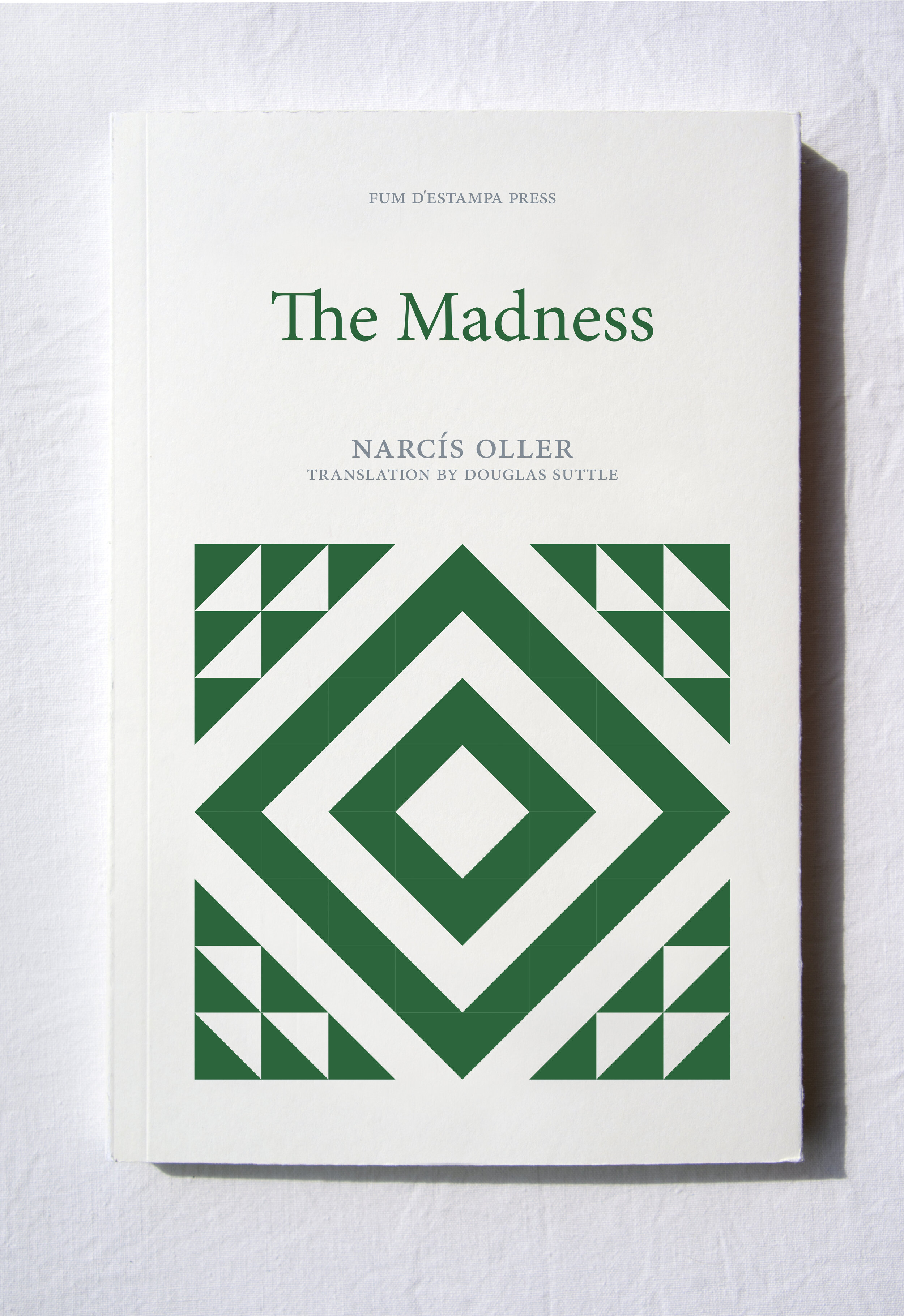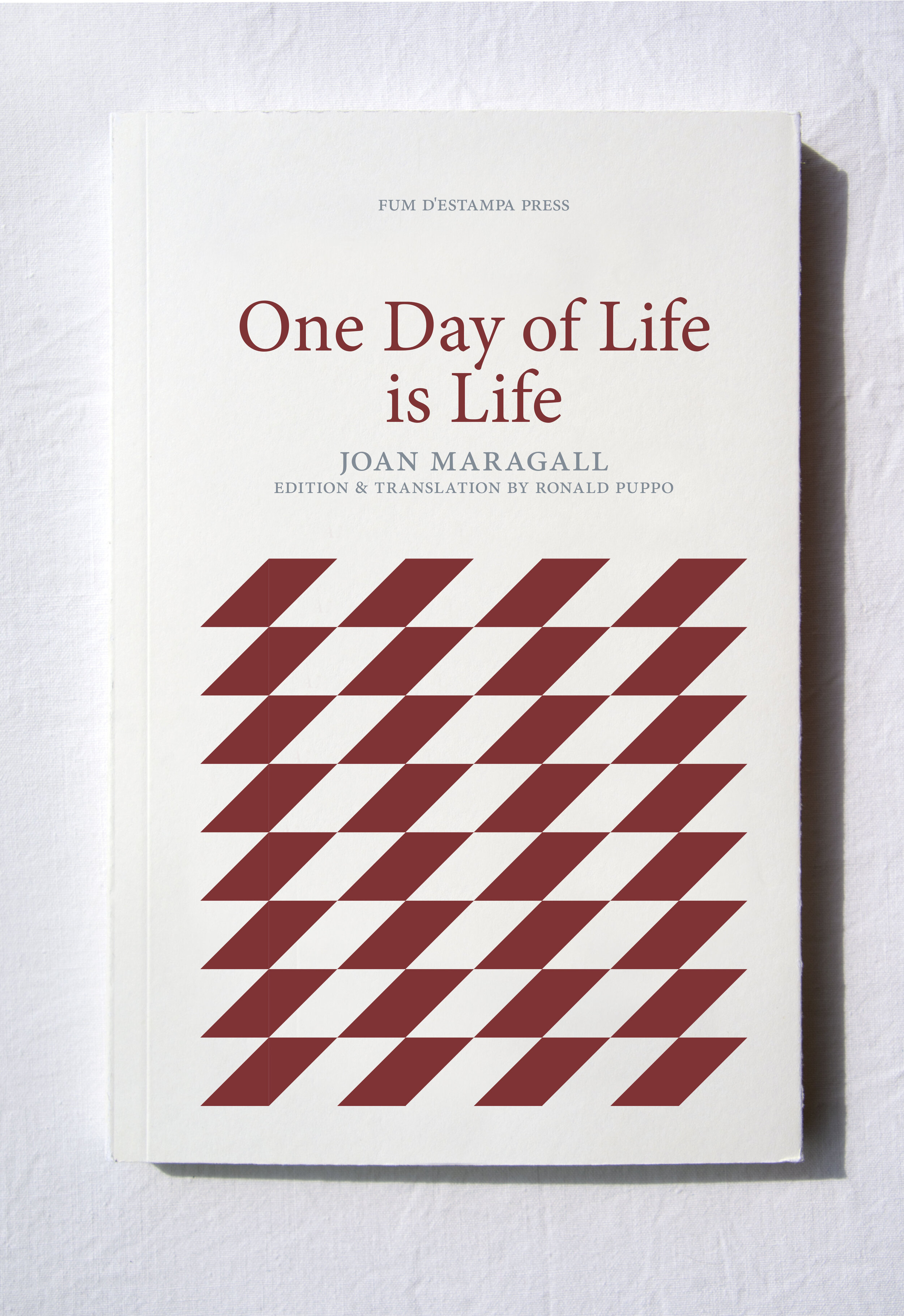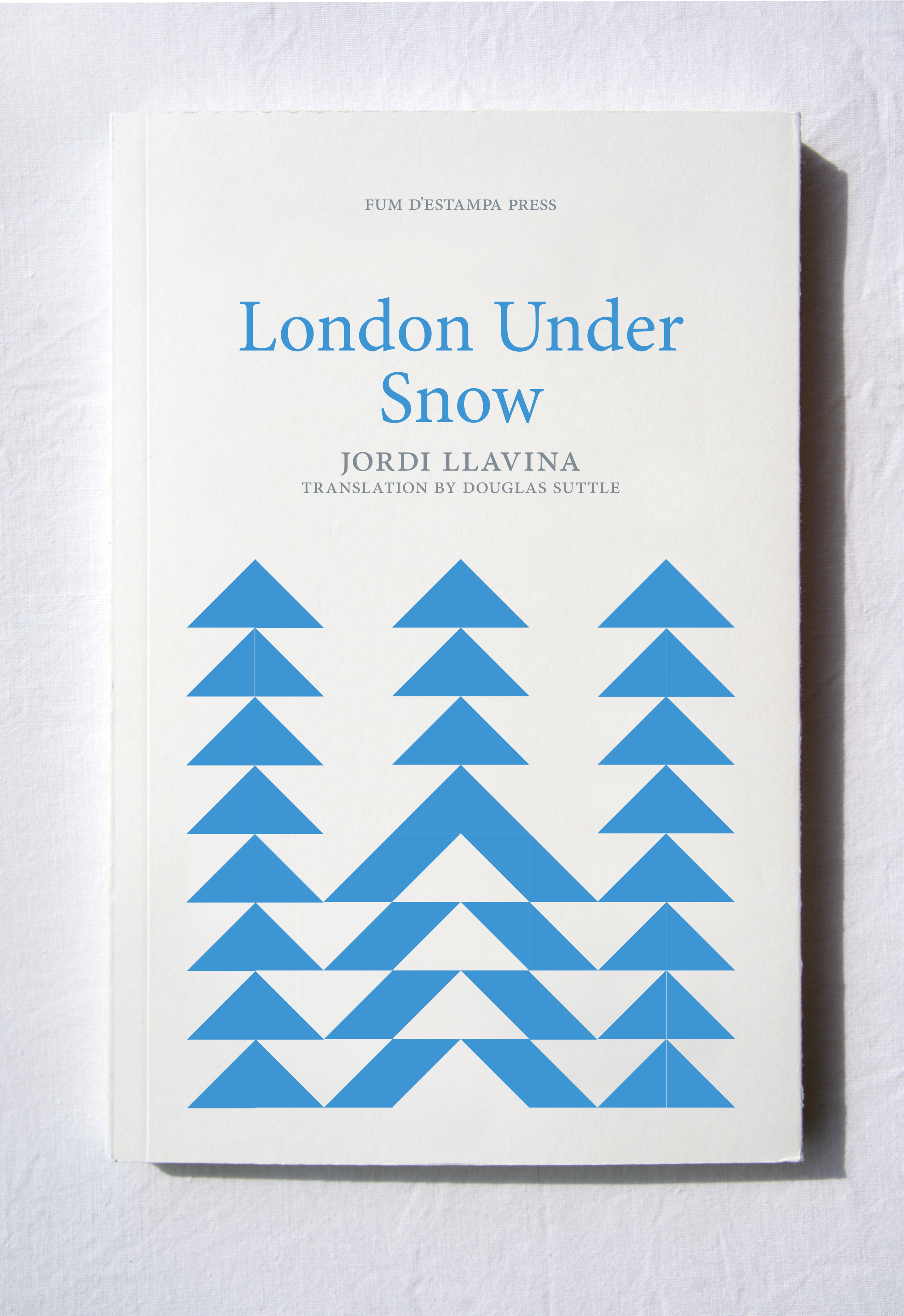 Image 1 of
Image 1 of


The Madness
ORIGINAL: NARCÍS OLLER
TRANSLATION: DOUGLAS SUTTLE
ISBN: 978-1-9162939-3-9
READ AN EXCERPT HERE
ORIGINAL: NARCÍS OLLER
TRANSLATION: DOUGLAS SUTTLE
ISBN: 978-1-9162939-3-9
READ AN EXCERPT HERE
ORIGINAL: NARCÍS OLLER
TRANSLATION: DOUGLAS SUTTLE
ISBN: 978-1-9162939-3-9
READ AN EXCERPT HERE
Written in nine chapters separated into three blocks, Narcís Oller’s The Madness is one of the first literary pieces of work to aim to truly analyze the social and genetic causes and results of mental illness. Told through the eyes of an anonymous “narrator” character, The Madness tells the story of a young revolutionary called Daniel Serrallonga and his gradual deterioration into madness and delusion. Set against the backdrop of the political crisis that ripped Spain apart in the mid to late 19th century and laid the foundations of the Spanish Civil War, The Madness is a fascinating study of mental health within both rural and urban Catalan society.
As relevant and entertaining now as it was when it was first published, this lively translation brings this fantastic piece of literature to new, modern audiences while drawing parallels with some of the 19th century’s greatest English language writers such as Charles Dickens and Thomas Hardy.
Narcís Oller (1846-1930) is widely considered to be one of the founding fathers of the Catalan literary renaissance. Through his use of realism and naturalism styles, he brought to life rural and urban Catalan life and society from the 19th and 20th centuries, incorporating many of the sweeping political and social changes from the time in his works.
His ability to create rich characters, beautiful landscapes and storylines that deal with the human psyche at its most extreme mean that he is still just as relevant as he was 100 years ago.
Download the AI here
FROM Michael Eaude’s review in Catalonia Today - full review here and here.
Though Serrallonga’s story is what structures the book, it is the social context, the glistening Rambla cafés, the clothes, the conversations between Giberga and the two friends, and the intrusions of political life that make the book so attractive, so realist. The Madness is no dense, nineteenth-century tract. Rather, it’s lively and witty: a tragedy, but written in a light, sometimes comic key.
FROM Alice Banks, www.eurolitnetwork.com - full review here
In just one hundred pages of precise and fast-paced prose, Oller’s realist style breathes life into the society of nineteenth-century Catalonia, and the dramatic and constantly fluctuating political and social changes that occurred during this period. Through the central character of Daniel Serrallonga, Oller subtly dissects this important and explosive era in Spain’s political history: a period of general strikes, military intervention, repression and political assassination, all of which manifest in Serrallonga’s troubled mind.
FROM Eleanor Updegraff, www.shinynewbooks.co.uk - full article here
‘Where is . . . the fine line between sanity and insanity?’ asks our narrator: the theme of this surprisingly complex novel condensed into a single sentence. Though very much a product of its time – The Madness undoubtedly takes a nineteenth-century view of things, something the contemporary reader ought not to forget – this is a novel that still has considerable relevance in terms of the way we relate to others, particularly in the context of mental health. Sharply translated by Douglas Suttle, who has smoothly adopted a rather dated language and renders Oller’s original text into subtle, flowing prose, The Madness is a politically, historically and socially significant novel that suggests Fum d’Estampa Press has a lot more to say.
FROM The Modern Novel, www.themodernnovel.org - full article here
This book is definitely a small gem. It mixes the humorous and serious very well, gives us an excellent view of late nineteenth century Catalonia and shows a healthy disrespect for authority, at least authority in late nineteenth century Spain.
FROM Paul Burke, NB Magazine - full article here
Catalan man of letters Narcís Oller is little known here but perhaps the publication of The Madness in a new translation by Douglas Suttle will address that. First published as La bogeria in Spain in 1899 this brief novel is a minor classic of European literature deserving of a modern audience. Oller wrote The Madness at the height of his fame, eschewing the romanticism of earlier works for a new realism that stylistically and intellectually connected with the great European writers of the day … The Madness is a journey into the mind of a man losing his grip on reality, it’s a psychological portrait that reflects on the lack of understanding of mental health by his contemporaries but it’s also an exploration of new ideas of psycho-analysis and positivism.
FROM THE MADNESS
Daniel Serrallonga was older than us and must have then been around twenty-five years old. But his pale, hollow face, thick, unruly beard and short, auburn hair made him look a lot older. His eyes, round and grey and hardly visible through the thick glass of his gold-rimmed pince-nez, ever balanced on the bridge of his hooked, flared and twisted nose, added years to him or, at least, provided him with an air of being of a somewhat undefinable age due to his clear lack of youth and the veil of sadness that they conferred on him. He had a big crown with a large, protruding forehead and bushy eyebrows. When listening or thinking his eyes would roll back into his head, hiding his pupils so that only the whites were showing, and the vein on his forehead and wrinkle between his eyebrows would swell and light up as if suddenly congested. He was a lanky man who dressed shabbily and was conspicuous for his terrible taste in ties, all of which were bright in colour and poorly knotted. Generally hot-blooded, he wore his hat pushed back on his head, wide open collars, and never wore gloves or any kind of coat, regardless of how cold it was. But in a surprising contradiction that was the result of ever feeling the need to harmonise his continuous internal agitation with the untiring movement of his limbs, his trousers were always tight and his jacket buttoned-up to the collar so as to carry handkerchiefs, books and newspapers in his pockets. He carried an iron-handled cane wherever he went and was never seen without a yellow-stained pipe sticking out of his mouth. If you ever saw him walking in the street, he was often alone with a worried look on his face and would be in such a rush that sweat would drip profusely from his forehead, neck and wrists. He was, in fact, the very person whose strange behaviour I had been told about from time to time by Armengol over the years.




